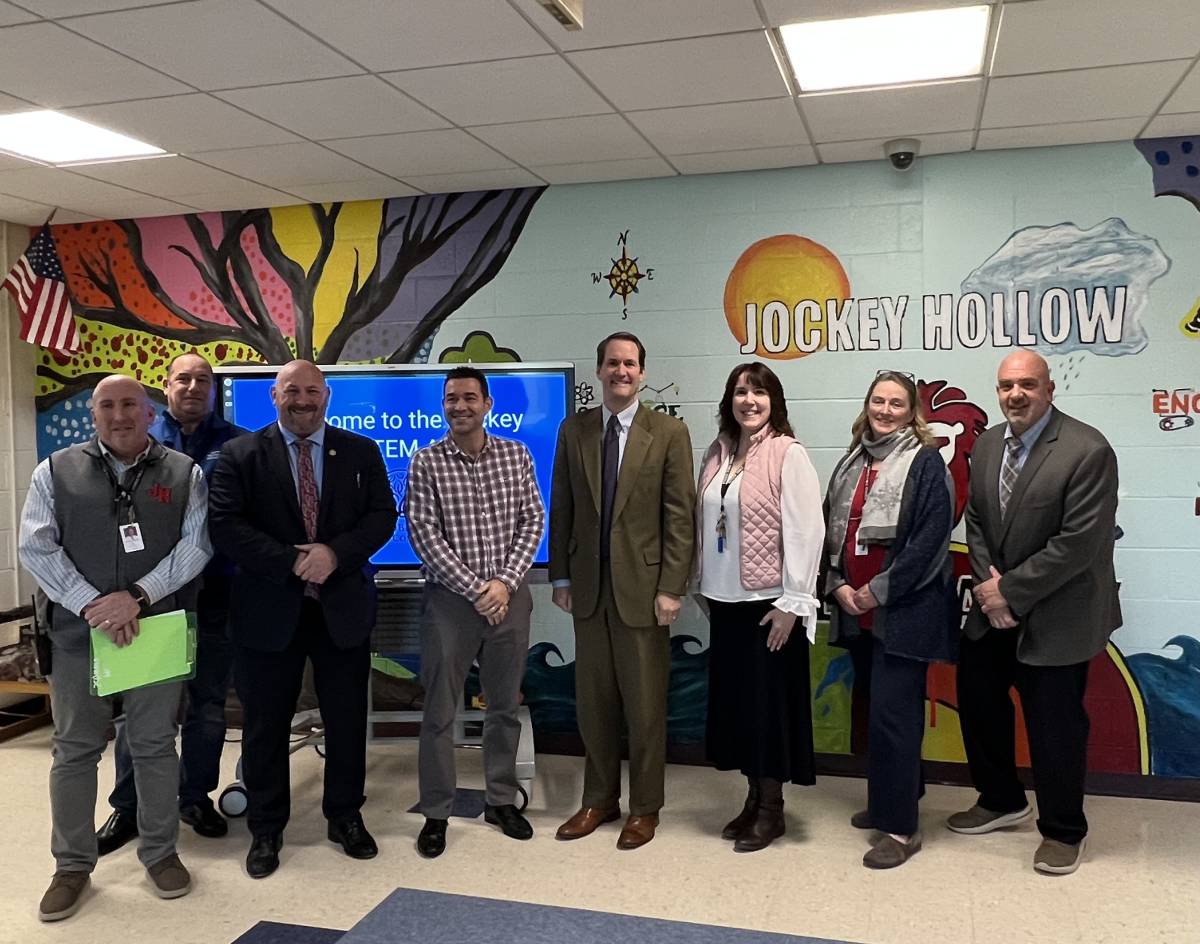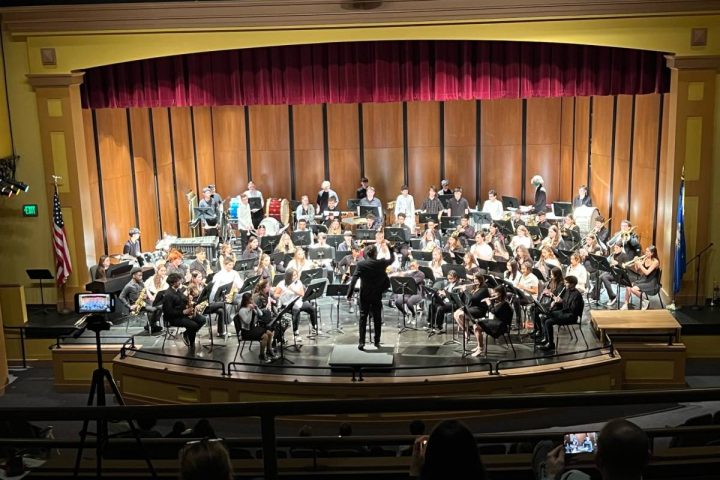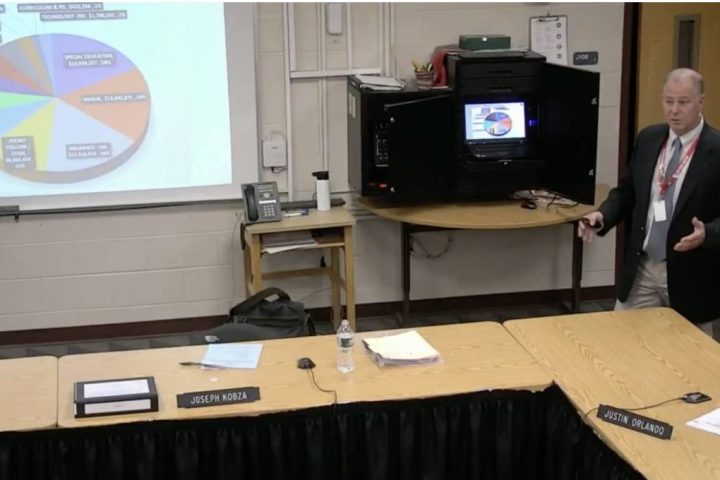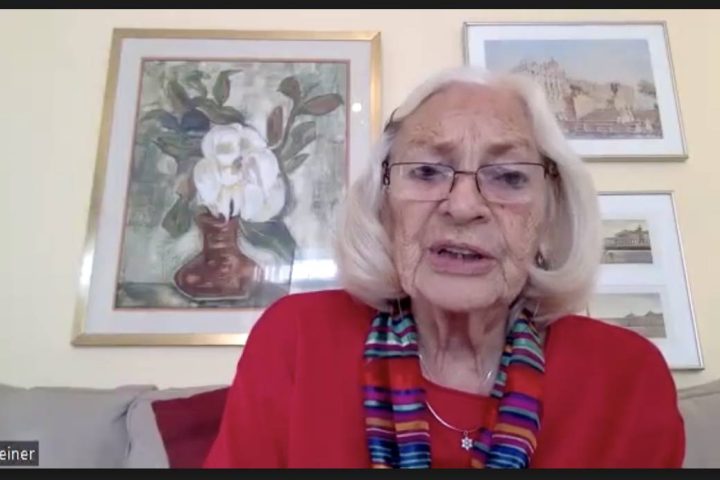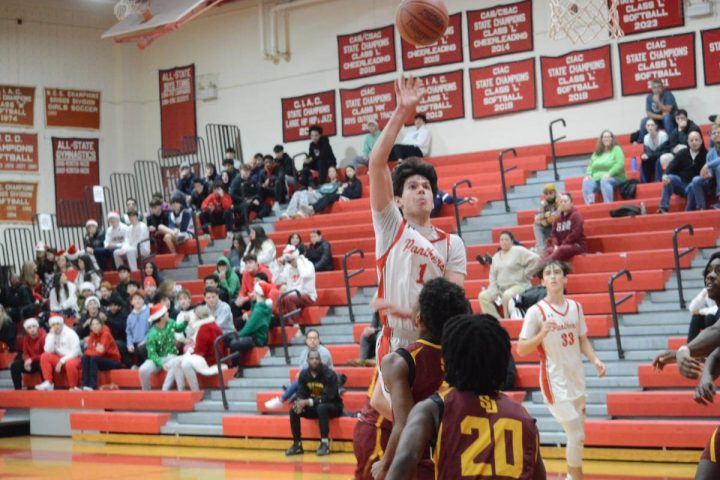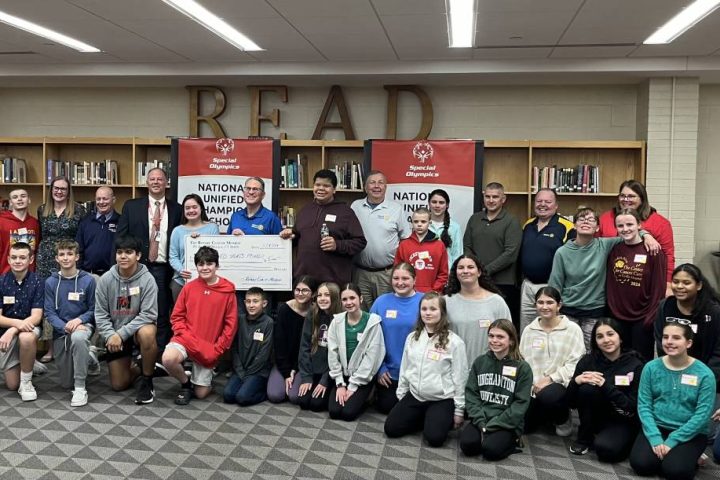MONROE, CT — Elisa Kinsella, a middle school special education teacher, used a mobile interactive display panel to do a “little marshmallow activity” inside her classroom in the STEM wing of Masuk High School Wednesday morning.
“It’s easy to use,” she said, before showing the mirroring technology, moving away from the touchscreen and typing on a laptop at her desk. The words she typed appeared on the large display panel.
The technology allows Kinsella to easily share work, videos and photos remotely with her students.
“Most classrooms have a fixed projector and a screen, so the teacher is tethered to the front of the room,” Paul Koorse, the technology director for the district and the town, explained. “The mobile displays are completely wireless.”
Sheila Casinelli, the assistant superintendent of schools, said the mobile smart boards have wheels and, because the setup does not require hardwiring with a projector, the display screens can also be used in smaller classrooms.
The technology was paid for through a $200,000 federal grant made possible by Congressman Jim Himes (D-4th District).
“The future jobs are all about technology, particularly programming software,” Himes said during a visit to the STEM Academy at Masuk Wednesday. He said it gives him “a really good feeling” to help prepare students for the job market.
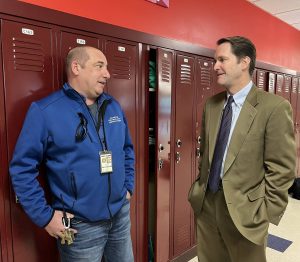
Himes was among several officials visiting the school to see the technology first-hand. Visitors also included Jockey Hollow Principal Julia Strong, State Rep. Tony Scott, R-Monroe, First Selectman Terry Rooney and Community and Economic Development Director William Holsworth.
They participated in a tour led by Casinelli, Koorse, and Jockey Hollow Middle School Assistant Principal and STEM Director Mark Schwarz.
The grant request was for 131 laptops and 13 display units, but Koorse said the district found not all of the laptops were needed.
“We reduced the number of laptops and docking stations needed and increased the amount of LCD Displays and fixed-height mobile stands to provide additional flexibility in the classrooms, as well as to include additional classrooms that were very much aligned with the STEM Academy curriculum (i.e. Robotics),” he wrote in the project narrative.
“Lastly, when we initially identified the population to be served, we only counted current staff and students,” he wrote. “This project will continue to provide value in the years to come, serving even more students of the STEM Academy as our current student population graduates to higher education institutions.”
Koorse said the new technology will be used by teachers and students at the STEM Academy, as well as in computer labs on Jockey Hollow’s main campus, where some STEM curriculum is taught.
Bright futures
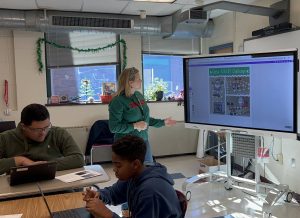
The tour began in tech ed teacher Nick Natalino’s classroom.
“We’re all here because we’re super excited about what you’re doing at STEM,” Himes told the class. “We all realize the technology, whether it’s programming, A.I., biosynthesis … all this stuff — that’s where the jobs are. That’s where our innovative edge is, so it’s just really exciting to watch you guys get excited about science, technology and math.”
Schwarz explained how the rolling smart board devices can be used to mirror what students are doing on their Chromebooks.
He wondered what the students will be doing for a living 30 years from now, and what their children’s schools will be like.
“I don’t know,” Schwarz said. “But I do know this: the firm foundation of technology that you’re getting here. And that is supported by the use of these types of technologies. You guys are really fortunate that you have these things.”
Whatever their futures hold, Schwarz said he knows it will be a bright.
A thriving robotics program
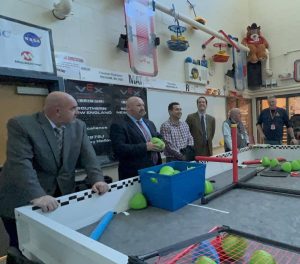
In another classroom, William McDonough, a teacher in charge of the robotics program, taught an AP class. He asked all those in robotics to raise their hands.
“Over 50 percent of these students are involved with robotics,” he told the tour group. “Our high school program has about 125 students involved and another 50 students in our middle school program.”
Technology from the federal grant will benefit students in robotics, who are responsible for designing, building, maintaining, driving and programming their robots.
“It’s a student-centered, very comprehensive program and they love it,” McDonough said.
Each team has two builders, two programmers, two drivers and a project manager. On Wednesday, one student explained the objective and how to score points in competitions.
Monroe’s robotics program has been thriving. If any of its teams make it to World competition in Dallas this year, McDonough said the town will have been represented 14 years running.
Local gratitude
“I want to thank Representative Himes for giving us the grant,” Scott said. “It’s going to help teachers and students. STEM is where a lot of the new jobs are coming from. Introducing students to STEM will prepare them for the future.”
Rooney thanked Koorse and his technology team and Holsworth for their roles in acquiring the grant and said the money was put to good use.
He also thanked Himes, Superintendent Joseph Kobza, the Monroe Board of Education, principals, Central Office, administrators and teachers involved in the Science, Technology Engineering and Math program.
All respectful comments with the commenter’s first and last name are welcome.

